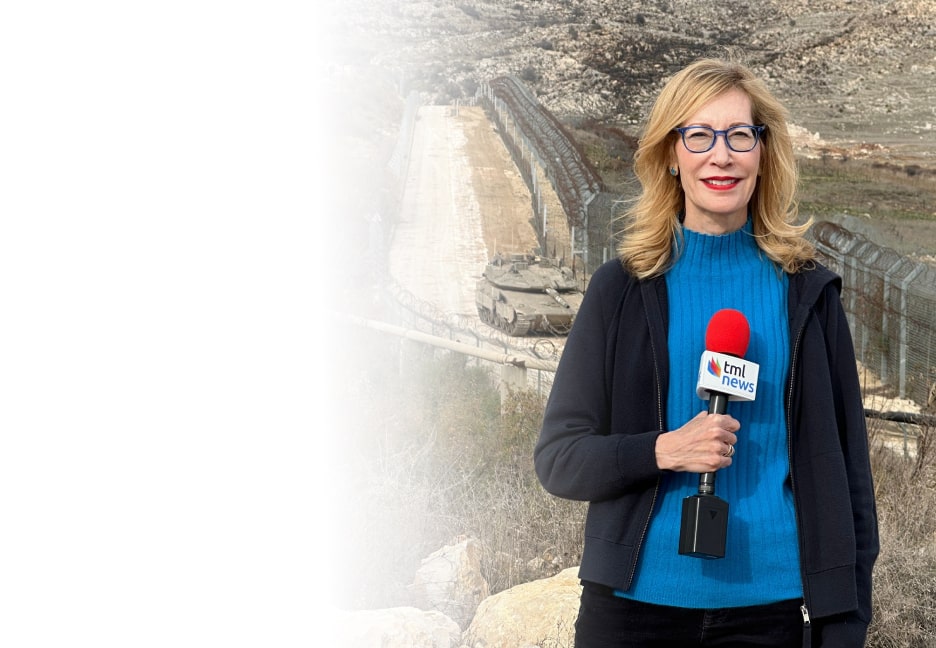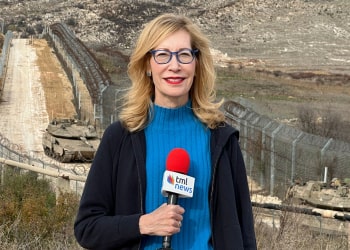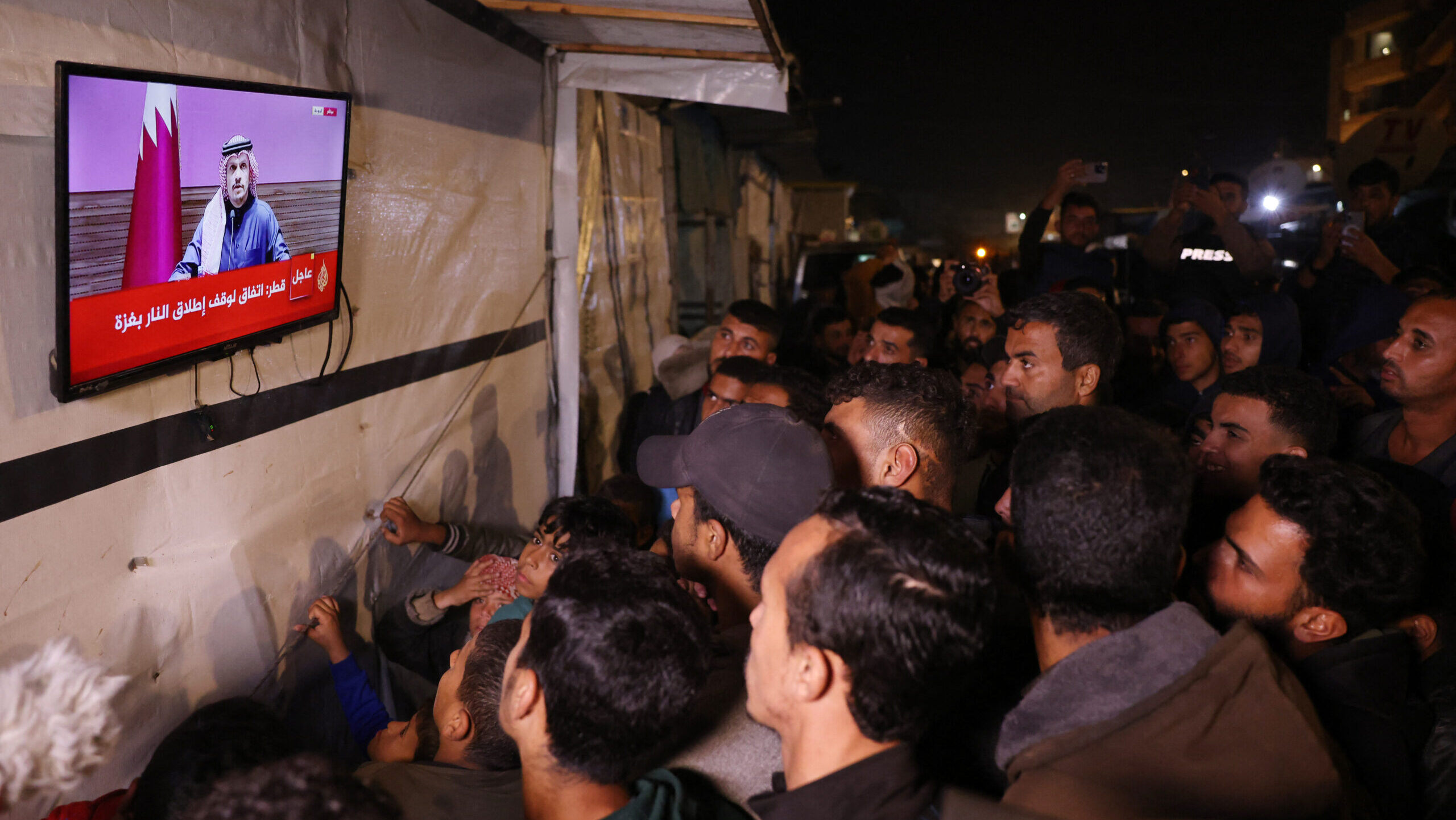External Powers Eye Influence as Hamas and PA Vie for Control of Gaza
Regional players such as Saudi Arabia, Qatar, and the UAE are leveraging reconstruction efforts to exert influence, with Saudi Arabia emerging as a key mediator due to its strategic interest in regional peace and normalization with Israel
Yesterday marked a critical moment in the ongoing Gaza conflict as a ceasefire deal was announced between Israel and Hamas. However, hope for stability quickly waned as Hamas backed away from the agreement’s terms this morning, reigniting tensions and casting doubt on the deal’s sustainability.
“The only card that they have left is the hostages’ one,” Amer Sabaileh, a Jordanian political analyst, said to The Media Line, noting Hamas’ tactical maneuvers to pressure Israel before the actual implementation of the deal on Sunday.
Meanwhile, internal divisions within Israel have also complicated efforts to implement the ceasefire. Disagreements among Israeli cabinet members, influenced by hardliners, have delayed decisive action. Khalil Jahshan, executive director at Arab Center Washington Inc., said to The Media Line, “The Israeli cabinet hasn’t reached a clear-cut vote of support, reflecting serious differences within their leadership.”
Extremists in (Benjamin) Netanyahu’s coalition, like (Bezalel) Smotrich and (Itamar) Ben-Gvir, have been vocally opposed to any deal, causing significant inner turmoil.
Jahshan added, “Extremists in (Benjamin) Netanyahu’s coalition, like (Bezalel) Smotrich and (Itamar) Ben-Gvir, have been vocally opposed to any deal, causing significant inner turmoil.” This mirrors the divisions within Hamas, which Sabaileh described as “desperately seeking to show victory on social media, but this doesn’t mirror either that, neither the people’s full support of them.”
This development underscores the broader question: what does the future hold for Gaza and Palestine, especially as internal factions like Hamas and the Palestinian Authority struggle for dominance while external powers seek influence over the region’s destiny?
Gaza’s leadership remains a contentious issue, with factions vying for control amid public dissatisfaction. Cornered by military losses and dwindling regional support, Hamas faces mounting challenges. “Their social incubator is not there anymore the way it was,” Sabaileh noted, reflecting the growing disillusionment among Gazans who increasingly view Hamas as a source of their suffering. Jahshan echoed this sentiment, describing Hamas as “the weakest chain, subjected to a lot of pressure” from both internal and external forces.
This holiday season, give to:
Truth and understanding
The Media Line's intrepid correspondents are in Israel, Gaza, Lebanon, Syria and Pakistan providing first-person reporting.
They all said they cover it.
We see it.
We report with just one agenda: the truth.


The PA has to prove that they are efficient, that they can change and apply effective policies. Hamas always won where governments made mistakes.
The PA, however, is not without its own challenges. Decades of perceived corruption and inefficiency have eroded its appeal, particularly in areas like Jenin, where intra-Palestinian conflicts exacerbated further tensions. “The PA has to prove that they are efficient, that they can change and apply effective policies,” Sabaileh explained, adding that “Hamas always won where governments made mistakes.” Jahshan reinforced this by warning, “If the PA takes over Gaza without significant changes to its leadership and rhetoric, they risk repeating the same mistakes, and Hamas will easily regain its power.”
The rivalry between Hamas and the PA extends beyond governance to competing visions for Palestine’s future. Jahshan stressed the importance of Hamas adapting to new realities: “Hamas must reshape its rhetoric and policies to focus on political legitimacy rather than military capacity. If they stick to the old game, they risk disappearing politically for good”.
Hamas cannot guarantee normal life or long-term stability for Gazans under its current approach.
This sentiment is mirrored by Sabaileh, who noted, “Hamas cannot guarantee normal life or long-term stability for Gazans under its current approach.”
Internal dynamics do not solely determine Gaza’s fate; external actors play a pivotal role. Countries like Saudi Arabia, the UAE, and Qatar have sought to assert their influence through reconstruction efforts and political mediation. “Saudi Arabia today is the main protagonist,” Sabaileh observed, noting the kingdom’s strategic interest in regional peace and normalization with Israel. This aligns with Jahshan’s assessment that “every phase of this agreement opens the door for further interventions from outside powers.”
Reconstruction, a crucial component of Gaza’s recovery, is seen as a potential avenue for foreign influence. “The role of rebuilding Gaza is an international mandate. It will not be for Hamas,” Sabaileh emphasized, suggesting that external funding and oversight could diminish Hamas’s control. However, this dynamic also raises concerns about whether such interventions prioritize Palestinian needs or serve broader geopolitical interests. Jahshan warned, “Wars create a vacuum, inviting stakeholders to pursue their interests under the guise of rebuilding.”
Wars create a vacuum, inviting stakeholders to pursue their interests under the guise of rebuilding.
The immediate need in Gaza is humanitarian aid, followed by long-term rebuilding and political stabilization. Sabaileh outlined a phased approach: “For the short term, it’s all about humanitarian aid. The mid-term is about rebuilding. The long term involves creating stability through governance and development.” However, Jahshan cautioned against over-reliance on financial aid alone, stating, “The West always thinks of money as if money resolves politics. Money does not resolve it.”
The question of leadership remains critical. “If a new movement emerges from the ashes of this war, calling for representative democracy and statehood, I think you will see a majority of Palestinians rally behind it,” Jahshan predicted. Yet, the balance of power among factions and external pressures make such unity difficult to achieve. Sabaileh added, “The PA and Hamas must both evolve and avoid repeating past mistakes to create a path forward for Gaza and Palestine as a whole.”
The ceasefire agreement—fragile and fraught with uncertainty—highlights the broader struggles facing Gaza and Palestine. Whether Hamas can pivot toward political legitimacy, whether the PA can rebuild its credibility, or whether external actors can facilitate meaningful progress remains to be seen. What is certain, however, is that the people of Gaza and Palestine yearn for stability, dignity, and self-determination. “After 15 months, people will seek to go back to normal life,” Sabaileh said, encapsulating the collective desire for peace and progress.
None of these parties can play the same game with the same rules. They must adapt to survive politically, or others will take over.
The rivalry between Hamas and the PA adds another layer of complexity to the situation. Jahshan concluded, “None of these parties can play the same game with the same rules. They must adapt to survive politically, or others will take over.” The road ahead will require balancing humanitarian needs, political reform, and external cooperation, with the voices of Palestinians at the center of the process. Anything less risks perpetuating the cycle of conflict and suffering that has plagued the region for far too long.

